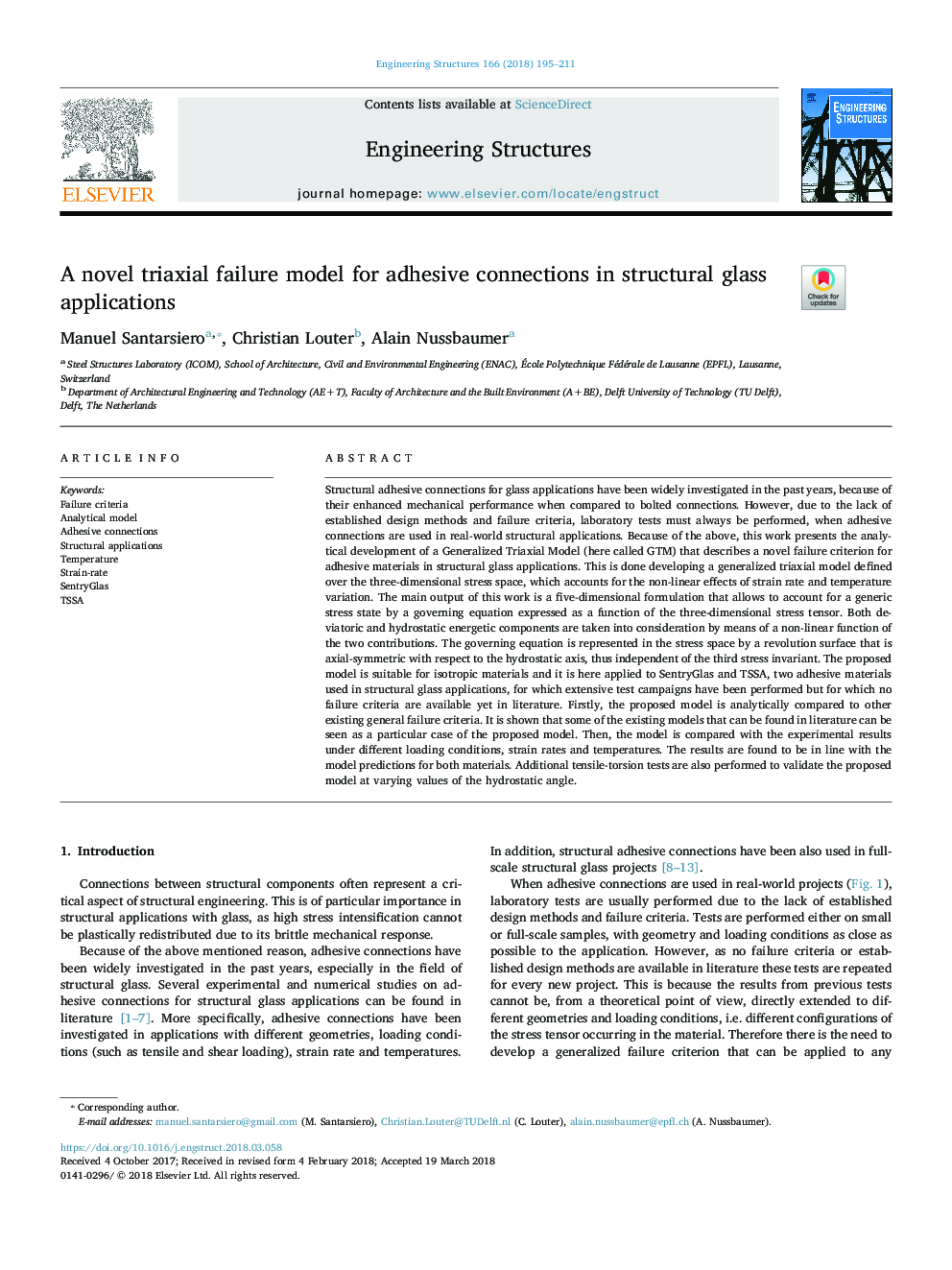| کد مقاله | کد نشریه | سال انتشار | مقاله انگلیسی | نسخه تمام متن |
|---|---|---|---|---|
| 6737449 | 1429061 | 2018 | 17 صفحه PDF | دانلود رایگان |
عنوان انگلیسی مقاله ISI
A novel triaxial failure model for adhesive connections in structural glass applications
ترجمه فارسی عنوان
مدل جدید شکست سه گانه برای اتصالات چسبندگی در کاربردهای شیشه ای سازه
دانلود مقاله + سفارش ترجمه
دانلود مقاله ISI انگلیسی
رایگان برای ایرانیان
کلمات کلیدی
موضوعات مرتبط
مهندسی و علوم پایه
علوم زمین و سیارات
مهندسی ژئوتکنیک و زمین شناسی مهندسی
چکیده انگلیسی
Structural adhesive connections for glass applications have been widely investigated in the past years, because of their enhanced mechanical performance when compared to bolted connections. However, due to the lack of established design methods and failure criteria, laboratory tests must always be performed, when adhesive connections are used in real-world structural applications. Because of the above, this work presents the analytical development of a Generalized Triaxial Model (here called GTM) that describes a novel failure criterion for adhesive materials in structural glass applications. This is done developing a generalized triaxial model defined over the three-dimensional stress space, which accounts for the non-linear effects of strain rate and temperature variation. The main output of this work is a five-dimensional formulation that allows to account for a generic stress state by a governing equation expressed as a function of the three-dimensional stress tensor. Both deviatoric and hydrostatic energetic components are taken into consideration by means of a non-linear function of the two contributions. The governing equation is represented in the stress space by a revolution surface that is axial-symmetric with respect to the hydrostatic axis, thus independent of the third stress invariant. The proposed model is suitable for isotropic materials and it is here applied to SentryGlas and TSSA, two adhesive materials used in structural glass applications, for which extensive test campaigns have been performed but for which no failure criteria are available yet in literature. Firstly, the proposed model is analytically compared to other existing general failure criteria. It is shown that some of the existing models that can be found in literature can be seen as a particular case of the proposed model. Then, the model is compared with the experimental results under different loading conditions, strain rates and temperatures. The results are found to be in line with the model predictions for both materials. Additional tensile-torsion tests are also performed to validate the proposed model at varying values of the hydrostatic angle.
ناشر
Database: Elsevier - ScienceDirect (ساینس دایرکت)
Journal: Engineering Structures - Volume 166, 1 July 2018, Pages 195-211
Journal: Engineering Structures - Volume 166, 1 July 2018, Pages 195-211
نویسندگان
Manuel Santarsiero, Christian Louter, Alain Nussbaumer,
